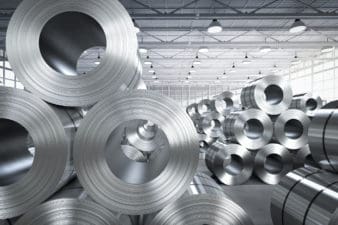One of the most enjoyable aspects of my job is that I often have the opportunity to interact directly with the men and women leaders of the companies we recommend investing in. Whether in person, or over the phone, I am constantly impressed by the transparency and vision on display. (Both of which are traits we look for in companies and management before we consider recommending them.)
In the most recent example, I traveled to Boston, Massachusetts, for an investor presentation by Silver Wheaton’s (TSX:SLW) (NYSE:SLW) CEO, Randy Smallwood. Prior to the presentation, Randy was kind enough to sit down with me and offer up some candid comments that late-comers to the presentation weren’t necessarily privy to.
Below, you’ll find an excerpt that I found particularly interesting.
In his opinion, it’s only a matter of time before demand for silver clamps down on supply, leaving the world with a potential shortfall. It’s this potential shortage that Mr. Smallwood believes will lead to a resurgence in the price of silver over the medium- to long-term.
Bu why the shortage in the first place?
Well, as many folks might not realize, the majority of mined silver doesn’t actually come from silver mines. It is, most often, a byproduct of mines targeting the likes of copper, gold, zinc, etc. And, much like silver, these metals have seen their prices continue to fall over the last couple of years, leading to meaningful reductions in capital expenditure plans by miners. As a result, silver as a byproduct could start to dry up.
And, if things play out the way he expects, the price of Silver Wheaton’s stock could rise in tandem. After all, Silver Wheaton is the lowest cost provider of silver in the world thanks to its unique streaming model.
But enough from me. Take it from the man in charge of the world’s largest silver streamer…
Muckerman: As that demand does grow, do you see the producers of silver and the streamers of silver having the pricing power, or do you see some of that going over to the demand side? Because they’ll be using more, they might have a little bit more pulling power there on the price side?
Smallwood: The challenge right now is, at the current prices in silver, people aren’t building silver mines. There are only a few silver mines that are actually strongly profitable right now. Most primary silver mines are treading water, or in fact slowly drowning, so this price isn’t supported on the production side.
One of the challenges is the fact that so much silver is produced as a byproduct, and that’s actually where our opportunity set comes in. Primary silver producers are only responsible for about 30% of worldwide production. Our market is the other 70% of worldwide production, which is the byproduct silver production.
You have to look at the lead, zinc, and copper miners, and the gold miners, to fully understand what that market is doing. With the prices that we see — and for that matter silver produced in gold mines also plays a role — but most of it is base metals. 60% of world silver production comes from base metal companies.
With lower prices in the copper space, and lower prices in the lead/zinc space right now, we’re not seeing a lot of investment into the ground, so there’s going to be a shortage on the supply side.
We’re already starting to see that. The more recent forecasts show production peaking in 2014, and dropping this year and next year; primary silver production dropping from 30% of worldwide production down to 25% of worldwide production, but also going from 850 million ounces last year down to 750 million ounces by 2018-19.
That, combined with increasing industrial demand, is going to really push the prices.
Muckerman: It’s going to pinch it, yes.
Smallwood: Yes, there’s going to be a pinch.
Up until now, traditionally, it’s been investor demand that drives what the price of silver is, until you’re at the bottom of the market and you get this cost of production that dictates the price.
I think for the first time ever in silver, we’re now looking at a point where the industrial demand may be the one that starts pushing the price of silver, controlling that, versus investor demand.
The compound impact of lowering production, increasing industrial demand, and the still-prevalent store of value, investor demand — you get all three of these combining together, this looks very promising for silver.
Pretty convincing, eh?
With the price of silver below $15 per ounce, darn near its lowest price in more than five years, Silver Wheaton’s 2014 cash cost per ounce of silver ($4.14) still looks quite attractive. And considering that it doesn’t expect this number to increase beyond $4.55 (based on 2019 projections), based on our calculations, we believe investors should enjoy any and all upside if the price of silver climbs anywhere even remotely close to its decade-high of more than $50/ounce.
It’s this stability and transparency that we see very few miners able to replicate, which is why Silver Wheaton is the only metals exposure we currently recommend in Stock Advisor Canada. And, right now, it’s just one of 39 recommendations that make up our investing service.
Want to find out the names and ticker symbols of the other 38, along with their premium analyst reports? Well, now is your chance to save $200 when you sign up for a 1-year membership that includes our 30-day full money back guarantee.
Just click here, fill out our secure order form and be on your way to investing – better.
Onward!





